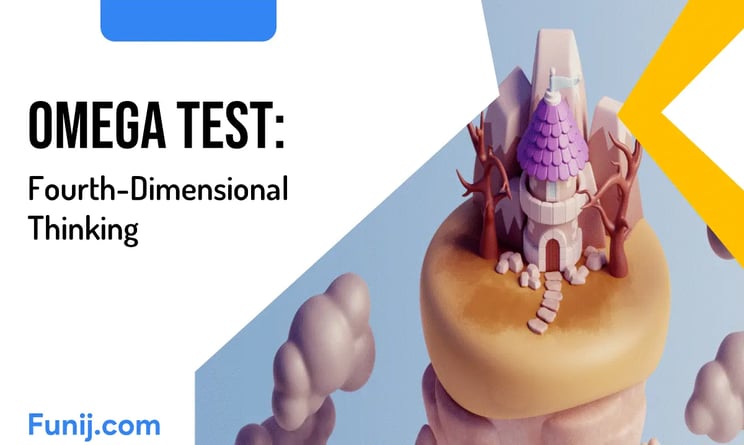Omega Test: Fourth-Dimensional Thinking Assessment
TES AKADEMIK


1. Becoming a Skilled Teller – Quiz Preparation Tips and Tricks
A teller is a crucial role in the banking industry. As a teller, your main responsibilities include handling financial transactions, providing customer service, and ensuring all processes are carried out accurately and efficiently. To succeed in this position, not only technical skills are required, but also knowledge of procedures, customer service ethics, and attention to detail when managing transactions.
Most financial institutions will conduct exams or quizzes for prospective tellers to assess their understanding of various aspects of the job. This article will provide an overview of the tips and tricks to prepare for the teller-related quizzes.
1. Purpose and Goals
To assess intuitive and analytical understanding of four-dimensional space.
To stimulate cognitive expansion beyond everyday physical perception.
To challenge spatial intelligence and multi-layered pattern recognition.
To encourage imaginative, flexible thinking that borders science, philosophy, and advanced mathematics.
2. Skills Evaluated
Spatial-Temporal Reasoning: Ability to track movement and transformation across dimensions.
Higher-Dimensional Visualization: Mental simulation of 4D objects and events.
Abstract Logical Thinking: Understanding rules and implications of extra-dimensional geometry.
Cognitive Flexibility: Adapting to non-linear, non-Euclidean thought models.
3. Target Audience
This test is suitable for:
Students or researchers in mathematics, physics, design, or philosophy
Individuals with high visual-spatial intelligence
Thinkers interested in multiverse theory, geometry, or consciousness studies
Anyone seeking to challenge the limits of traditional logic and perception
4. Sample Omega Test: Fourth-Dimensional Thinking Assessment
1. How can a shadow of a tesseract (4D cube) be best visualized in 3D?
A. As a rectangle
B. As a rotating sphere
C. As two nested cubes connected by lines
D. As a flat pattern with spikes
Answer: C As two nested cubes connected by lines
Explanation:
A tesseract's 3D shadow appears as a cube within a cube connected by lines at corresponding vertices—much like how a 3D cube projects to a square within a square in 2D.
2. If time is the fourth dimension, then time travel is conceptually similar to...?
A. Expanding a surface
B. Translating an object along a new axis
C. Rotating a point
D. Shrinking into singularity
Answer: B Translating an object along a new axis
Explanation:
Time travel is analogous to moving along the temporal axis, similar to how an object can move in any spatial direction in 3D.
3. Which of the following best describes the hypervolume of a 4D object?
A. The volume of a 3D cube
B. The area of a plane
C. The measure of extent in four perpendicular directions
D. A projection of mass
Answer: C The measure of extent in four perpendicular directions
Explanation:
In 4D, hypervolume is the extension in four perpendicular axes, just like area is in 2D and volume is in 3D.
4. What is the 4D analog of a square?
A. A sphere
B. A cube
C. A tesseract
D. A pyramid
Answer: C A tesseract
Explanation:
A square (2D) extends to a cube (3D), and a cube extends to a tesseract in 4D.
5. A 4D being looking at a 3D object would see...?
A. Just the front of it
B. All sides at once, including the inside
C. A flat shape
D. A distorted silhouette
Answer: B All sides at once, including the inside
Explanation:
Just as we can see all parts of a 2D object at once, a 4D being can perceive the full structure of 3D objects, including internal features.
6. What happens to a 3D cube when it rotates through the fourth dimension?
A. It stays the same
B. It disappears
C. It transforms and appears to morph through impossible shapes
D. It shrinks to a point
Answer: C It transforms and appears to morph through impossible shapes
Explanation:
A 4D rotation causes the cube to appear to morph, flip inside out, or change volume, due to the viewer's limited 3D perception.
7. How many cubes make up the "faces" of a tesseract?
A. 4
B. 6
C. 8
D. 16
Answer: C 8
Explanation:
A tesseract is bounded by 8 cubes, just as a cube is bounded by 6 squares.
8. If you intersect a tesseract with 3D space, the resulting shape might appear as...?
A. A sphere
B. A rotating cube
C. A series of morphing 3D objects
D. A flat shape
Answer: C A series of morphing 3D objects
Explanation:
Just like slicing a 3D object produces 2D cross-sections, intersecting a 4D object with 3D space results in ever-changing 3D slices.
9. What property allows 4D objects to appear to "phase" through 3D walls?
A. Quantum tunneling
B. Lack of gravity
C. Additional degrees of freedom
D. Invisibility
Answer: C Additional degrees of freedom
Explanation:
4D objects can move in a direction inaccessible to 3D objects, allowing them to bypass 3D barriers.
10. In 4D space, a sphere generalizes into what shape?
A. A hypersphere
B. A torus
C. A dodecahedron
D. A tesseract
Answer: A A hypersphere
Explanation:
A hypersphere is the 4D equivalent of a sphere—defined by all points equidistant from a central point in four dimensions.
Click the “Start Working on Questions” button below to continue this quiz.
5. Omega Test Scoring Guide
Score: 0–5 correct answers
Result: Surface Thinker
You are beginning to explore abstract dimensions. Consider studying spatial geometry and dimensional analogies to expand your perception.Score: 6–10 correct answers
Result: Dimensional Explorer
You grasp some higher-dimensional concepts and have potential for deeper understanding. Continue training your visual-spatial reasoning and imaginative logic.Score: 11–15 correct answers
Result: Multi-Dimensional Analyst
You demonstrate strong intuition and logic in non-Euclidean spaces. You can understand and mentally simulate concepts beyond typical spatial limits.Score: 16–19 correct answers
Result: Omega Thinker
You think across dimensions and process information beyond 3D constraints. You have rare cognitive agility used in advanced theoretical science and design.Score: 20 correct answers
Result: Fourth-Dimensional Mastermind
You exhibit elite-level comprehension of 4D logic and abstraction. Your thinking transcends traditional frameworks—ideal for quantum, cosmological, and topological research.
Conclusion
The Omega Test offers a unique gateway into the realm of higher-dimensional thinking. By exploring concepts that extend beyond ordinary spatial logic, participants are encouraged to expand their mental frameworks and embrace more complex, multidimensional perspectives. Whether you're a scientist, philosopher, designer, or curious thinker, this test challenges your capacity to perceive, reason, and imagine in ways that conventional assessments do not.
Sources:
Rudy Rucker, The Fourth Dimension: Toward a Geometry of Higher Reality
Edwin A. Abbott, Flatland: A Romance of Many Dimensions
Carl Sagan, Cosmos – “The Fourth Dimension” segment
Lisa Randall, Warped Passages: Unraveling the Mysteries of the Universe's Hidden Dimensions
Visualizing 4D: Wikipedia - Tesseract
Paul Bourke, Projections of 4D Objects into 3D
Call to Action (CTA):
Ready to challenge your mind and step into the fourth dimension?
Take the Omega Test now and discover where your dimensional thinking stands. Whether you're a Surface Thinker or a Fourth-Dimensional Mastermind, this journey will change how you perceive reality.
Dare to go beyond. Think Omega.
Start the test. Unlock new dimensions.
